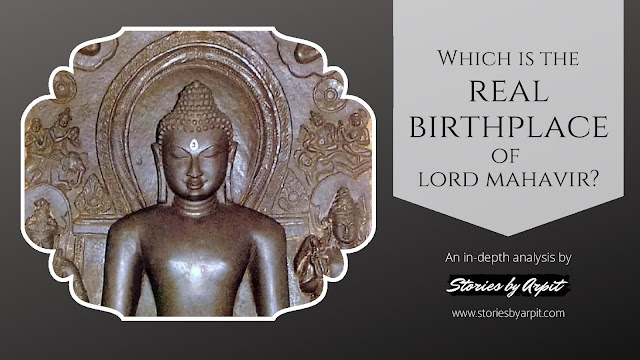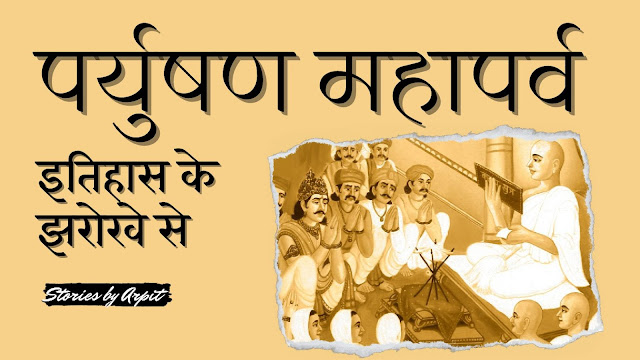Ancient idols of Lord Mallinath worshiped in female form
While I have always been fascinated by history, some intricacies of Jain antiquity have never failed to amaze me. One such instance where such historicity is debated is that the two major sects of Jainism – the Shwetambar’s and Digambar’s disagree on the matter whether the 19th Tirthankar, Shri Mallinath Bhagwan was a male or female. While the Shwetambar’s believe that Lord Mallinath was a female, the Digambar’s disagree on the same as they perceive that a true mendicant must renounce all property or possessions including clothes to attain Moksh (Liberation). This injunction effectively bars women from ever renouncing all "possessions" and, accordingly, from attaining Moksh. On the other hand, the Shwetambar’s have put forward various Shastras (scriptures) to claim that a female can attain Moksh and further state that a female (Lord Mallinath) becoming a Tirthankar is an Acchera / Asharya (exception/ extraordinary event) of this cosmic age.
Further, even though the Shwetambar’s believe that Lord Mallinath attained Moksh as a female, they do not currently worship Lord Mallinath’s image in a female form on the following grounds -
- One worships the soul of the Vitraag Tirthankar (and not a physical body) so it does not matter whether the idol is depicted in male or female form;
- It would be against the code of decency to show the female anatomy on a Tirthankar’s idol.
- As human souls became more and more corrupted, it was observed that a lay person may not inculcate vairagya (dispassion) on witnessing a female form of a Tirthankar.
While I do not wish to delve deep into this sectarian debate, what I wish to highlight is the fact that both the Shwetambar and Digambar sects have installed and worshipped idols of Shri Mallinath Bhagwan in the feminine form. I will try to give evidence on the same by listing more than 10 known instances (there could be more) which prove that Lord Mallinath was also worshiped in the female form in the ancient ages.
1. 1500-year ancient idol of Lord Mallinath excavated in 2002 – As reported in a regional newspaper – “Hindustan” (dated 4th July 2002), an idol of Lord Mallinath in standing position was excavated from Akaur Basti in the Madhubani District in Darbhanga (Bihar). This idol made of brass coloured stone measured 2 inches in length and ½ inches in breadth depicted a fully clothed image of Lord Mallinath with long braids of hair and developed breasts. As per historian, Dr. Satyanarayan Thakur (a noted professor at C.M. College, Darbhanga) the idol dates back to the 5th Century AD and signifies the presence of Shwetambar Jains in the area (as the idol is fully clothed). The reference of the same was carried out in the “Namo Titthasa” newsletter by Shri Lalit Nahata in its February 2003 edition. As per Acharya Vijayshilchandrasuri of Shwetambar sect, the discovery of this idol is very significant because it provides Archaeological evidence (apart from Scriptural evidence) that Lord Mallinath was a female.
2. Headless Idol of Lord Mallinath dating back to 7th Century in Lucknow Museum - The Provincial museum, Lucknow preserves this unique idol of Lord Mallinath in black stone sitting in Padmasan Mudra. This idol was destroyed during attacks and thus is headless. The Lanchan (symbol) shows a defaced figure of Kumbh (Pitcher). The open palm of the right hand placed in Dhyan Mudra shows a lotus-mark but there is no Sri-vats mark on the chest (see image below). However, what makes this idol very unique is that its reverse part shows hair woven in braids and the developed breasts are so prominent that it is natural to regard this idol as a female figure. As per Dr. Umakant Premanand Shah (M.A., Ph.d) although the identification of the idol as Lord Mallinath is unmistakable, it is difficult to ascertain whether this idol was Digambar or Shwetambar as no clothes have been carved on this idol.
 |
| Front view of the idol of Lord Mallinath preserved in Lucknow Museum |
 |
| Back view of the idol of Lord Mallinath preserved in Lucknow Museum |
3. Idol of Lord Mallinath at Digambar Jain Temple, Keshavrai Patan (Bundi Dist. Rajasthan) – This large idol of Lord Mallinath dating back to 1,000 years is seated within a beautiful Parikar with the Ashtapratiharya. While this idol has both the Shwetambar and Digambar elements to it, it is unmistakably female (see image below). Although no trace of clothes can be found, Kundal’s (ear-rings) have been carved on the face.
 |
| Ancient idol of Lord Mallinath |
 |
| Ancient idol of Lord Mallinath (close-up) |
The said temple also has another such image in female form which can also be attributed to Shri Mallinath Bhagwan
4. 1,800 year ancient idol of Lord Mallinath in Khulna Museum, Bangladesh – On 18th December 2007, the Khulna office of the Archaeology Department of Bangladesh excavated an 1,800-year-old, 7 inch long red sandstone terracotta idol of Lord Mallinath in female form with flowing hair from Damdampir in Jessore, Bangladesh (see image below). While the idol with Parikar does not bear any Lanchan, the terracotta plaque bears the name of the Tirthankhar as Lord Mallinath. It is currently kept in display at the Khulna Museum.
 |
| Idol of Lord Mallinath excavated from Bangladesh |
5. Ancient idol of Lord Mallinath excavated from Guna, Madhya Pradesh – An ancient 9-inch idol of Lord Mallinath with braided hair and breasts was discovered from Guna area in Jabalpur District. It is currently in custody of Archaeology Department, Madhya Pradesh.
6. Ancient idol of Lord Mallinath at Fungani – An ancient Panchdhatu idol of Lord Mallinath with open hair, embellished jewellery and breasts in the Ardhapadmasan mudra is installed in the Adinath Jain Shwetambar temple at Fungani village situated in the Sirohi district (Rajasthan) near Mohabbatnagar.
6. Ancient idol of Lord Mallinath at Fungani – An ancient Panchdhatu idol of Lord Mallinath with open hair, embellished jewellery and breasts in the Ardhapadmasan mudra is installed in the Adinath Jain Shwetambar temple at Fungani village situated in the Sirohi district (Rajasthan) near Mohabbatnagar.
 |
| Idol of Lord Mallinath at Fungani |
7. Mallinath Bhagwan worshipped by Tamil Digambar Jains in feminine form - Tamil Jains, also known as Samanars have traditionally followed the Digambar sect. However, various idols of Shri Mallinath Bhagwan found from Perumbugai, Mannargudi, Perumbukha, Goonampadi, etc show that Samanars used to worship Shri Mallinath Bhagwan in the female form.
 |
| Shri Mallinath Bhagwan in female form at Perumbugai, Viluppuram district of Tamil Nadu (Source: ahimsayatrai.com/ Bhushan Shah) |
 | |
|
.jpeg) |
| Shri Mallinath Bhagwan in female form at Senchi, Viluppuram district of Tamil Nadu (Source: Dinamalar.com/ Bhushan Shah) |
.jpeg) |
| Paintings depicting Shri Mallinath Bhagwan as female, Goonampadi, Tamil Nadu (Source: ahimsayatrai.com/ Bhushan Shah) |
8. 18th Century Painting of Rishimandal yantra in Rajasthan - An eighteenth-century painting of the Shwetambar Ṛiṣhimaṇḍal yantra features a female image of Lord Mallinath standing alone in the portion of the "ī" that falls to the side of the "hr" (see image) of the 'Hrīm' rather than having both Lord Parshwanath and Lord Mallinath seated in this section of the "ī," as was common at the time. Presenting Lord Mallinath as the most prominent Tirthankar of the diagram seems to be an intentional move to distinguish this diagram from its Digambar counterparts. Looking closely, we can see that the commissioners of this painting took special care to emphasize that this standing Tirthankar is, indeed, a female Lord Mallinath as it is represented with a symbol (Kumbh), depicted below the Tirthankar (other 23 Tirthankar’s are not shown with their symbols). The Tirthankar Mallinath as represented here has a female figure, with breasts and also wears a cloth that is not typically shown on images of other 23 Tirthankar’s. Currently, this painting is owned by a private antique collector.
Further, although all images of Tirthankar’s appear similar, the ancient idol of Lord Mallinath at Bhoyani tirth (discovered 140 years ago) near Ahmedabad, Gujarat is also believed to have a female/ womanly face as specified in the tirth’s history.
 |
| Shri Mallinath Bhagwan, Bhoyani Tirth |
At the end, based on the above instances, I would like the readers to decide whether the idols of Lord Mallinath should be installed in the female form (as per the practices followed by earlier saints) or one should stick to the current practice of depicting the lord in the male form (as per the Shwetambar logic mentioned above).
While it is not important to create a distinction between a male and female image of the lord (as one worships the soul and not the physical image), the motive of this post is only to illustrate the fact that Tirthankar Shri Mallinath Bhagwan was worshipped in feminine form in the ancient ages and not to hurt anyone's religious sentiments.
Sources:
- Anusandhan Newsletter by Acharya Vijayshilchandrasuri. April 2003
- Hindustan (newspaper), 4th July 2002
- Namo Titthasa Newsletter by Lalit Nahata, February 2003
- A rare sculpture of Mallinath, Dr. U.P. Shah (1987, pp. 159-160). Plate LVII
- Daily Star News, Bangladesh, 29th December 2007.
- Shades of Enlightenment- A Jain Tantric Diagram and the Colours of the Tīrthaṅkaras, Ellen Gough, International Journal of Jaina Studies Vol. 8, No. 1 (2012)
- Gender and Salvation, Jaina Debates on the Spiritual Liberation of Women by Padmanabh S. Jaini (1991)
- Online resources - Jainsite.com / Jainelibrary.com / Jinalaya.com















What is more important is to find out ways to attain moksha which lord Mallinath n other 23 tirthankars achieved n showed us the way... Once u reach that stage.. it doesn't matter
ReplyDeleteWhat you have said is absolutely correct but being laypersons it is equally important to transfix our focus into some form...if this was not the case than idol worship would have never happened. Further, I also mentioned the same in the last paragraph of post - "While it is not important to create a distinction between a male and female image of the lord (as one worships the soul and not the physical image)". This post only deals with the fact that the current tradition diverges from the ancient tradition of worshiping Lord Mallinath in the female form.
DeleteDear Arpit Shah,
ReplyDeletethank you so much for this post of yours on the headless Murti of Lord Mallinātha! I am reading Roberto Calasso's book on the Vedas, Ardor, which I recommend very warmly. In the Penguin Random House edition of 2014, both the title of the front view and the back view of the idol are not referenced correctly, but the Lucknow State Museum is named as housing the idol. So, looking for the exact title of the female figure that adorns the cover of Calasso's book, I followed this lead, and thus chanced upon your blog. And not only do I find beautiful representations, but also an elaborate description of the history and the background of this remarkable idol, that I will certainly continue to explore.
Warm regards, Axel Fussi
Glad you found the information useful :)
DeleteIf our ancestors found it ok to worship a mallinath bhagwan in female deity then why shouldn't we.
ReplyDeleteD
ReplyDeleteDear Arpit
ReplyDeleteDear Arpit
ReplyDeleteWhile discussing with my friend who visited some place in Madhya Pradesh and found statue of Lord Mallinathji in female form we wondered whether worshipped in male form today Mallinathji was actually mallikumari or mithilakumari ?
Reading your article l m again thinking how broadminded we were having no distinction and difference between male and female.Also when we jains believe in Atma and Karma, Bhava and chetna then how can we say females can't attain moksha?
The posts by you are after real ground work. Which is really very needed while discussing the subject in depth. Your post on societies linmitation are worth considered at highest level.
ReplyDeletenaturally that is not being taken up, as it has certain factors, major being the kalchakra. So what we can do is at least first we shall improvise & bring our own thinking in to our daily acharan. That way we may have noticeable change in entire community. Hope we get more such posts every week.
Thanks a lot !
DeleteThanks a lot
ReplyDeleteThis comment has been removed by the author.
ReplyDeleteThis comment has been removed by the author.
ReplyDelete